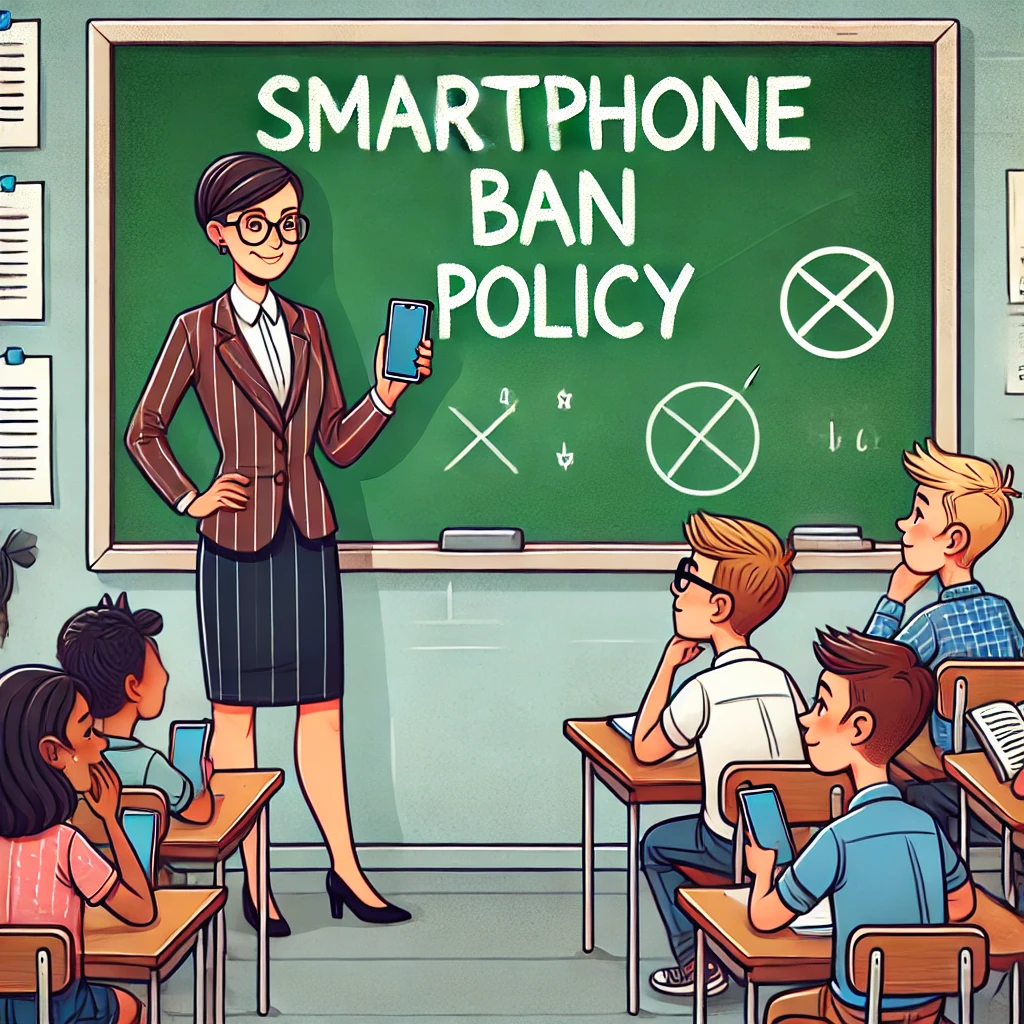A recent study has found that gamers are at risk of experiencing irreversible hearing loss and tinnitus. The study suggests that gamers often play with the volume turned up to unsafe levels for extended periods of time. This prolonged exposure to high volumes can lead to damage to the ears. The study, which reviewed 14 studies involving over 50,000 people, calls for more public health efforts to raise awareness about the risks of gaming on hearing. The World Health Organization (WHO) recommends that adults should not be exposed to noise levels above 80 decibels (dB) for more than 40 hours a week. For children, the thresholds are even lower. Some of the studies evaluated by researchers found that average headphone noise levels in shooting games ranged from 88.5 to 91.2dB, while impulse sounds reached 119dB. The paper also found that boys tend to play video games more often and for longer periods of time at higher volumes than girls. While some studies found correlations between gaming and hearing loss, others linked gaming with tinnitus. The authors of the study acknowledge that more research needs to be done to establish a stronger link between gaming and hearing loss. They also suggest that factors such as e-sports, geographic region, sex, and age should be further investigated. The limited available evidence suggests that gaming may be a common source of unsafe listening, and therefore, interventions such as education and awareness initiatives should be prioritized to promote safe listening among gamers. The gaming industry body Ukie encourages people to use headphones within safe levels but did not comment further on the study. To protect your hearing while gaming, it is recommended to turn the volume down to about 50%, take regular breaks every hour, and use noise-cancelling headphones in noisy environments while not exceeding safe volume limits.
Original news source: Gamers at risk of irreversible hearing loss and tinnitus, study suggests (BBC)
🎧 Listen:
Slow
Normal
Fast
📖 Vocabulary:
| 1 | irreversible | Impossible to reverse or undo |
| 2 | tinnitus | A ringing or buzzing in the ears |
| 3 | prolonged | Extended in time; lasting longer than usual |
| 4 | exposure | The condition of being subjected to something, typically something harmful |
| 5 | thresholds | The level or point at which something begins or changes |
| 6 | impulse | A sudden strong wave or burst of something |
| 7 | decibels | A unit of measurement for the intensity of sound |
| 8 | correlations | Relationships or connections between two or more things |
| 9 | acknowledge | To accept or admit the existence or truth of something |
| 10 | interventions | Actions taken to improve a situation or problem |
| 11 | initiatives | Programs or efforts intended to bring about a particular result |
| 12 | prioritize | To treat something as more important than other things |
| 13 | industry | The commercial production and sale of goods and services |
| 14 | recommended | Advised as a course of action |
| 15 | noise-cancelling | Designed to reduce or block out background sound |
Group or Classroom Activities
Warm-up Activities:
– News Summary
Instructions: Have students read the article individually and then summarize the main points in their own words. They should focus on the risks of gaming on hearing, the recommended safe listening levels, and the need for awareness initiatives. After summarizing, students can compare their summaries with a partner and discuss any differences or additional information they included.
– Opinion Poll
Instructions: Divide the class into small groups. Each group should come up with a poll question related to the article, such as “Do you think gaming can lead to hearing loss?” or “Have you ever experienced tinnitus after gaming?” Each group will then conduct a mini poll within the class, asking other students their opinions on the topic. After collecting the data, each group will present their findings to the class and lead a discussion on the different perspectives.
– Sketch It
Instructions: Give each student a piece of paper and ask them to draw a visual representation of the risks of gaming on hearing. They can include elements such as headphones, volume levels, and ears. After everyone has finished, students can pair up and take turns explaining their drawings to their partners. This activity encourages creativity, visual thinking, and verbal communication.
– Vocabulary Pictionary
Instructions: Write a list of key vocabulary words from the article on the board, such as “tinnitus,” “thresholds,” and “impulse sounds.” Divide the class into two teams. One student from each team will come to the front of the class and choose a word from the list. Without speaking, they must draw a picture to represent the word while their teammates try to guess what it is. The team that correctly guesses the most words within a given time limit wins.
– Two Truths and a Lie
Instructions: Have each student come up with two true statements and one false statement related to the risks of gaming on hearing. They can be personal experiences, statistics, or general facts. Each student will then share their statements with the class, and the rest of the students have to guess which statement is the lie. This activity encourages critical thinking, listening comprehension, and speaking skills.
🤔 Comprehension Questions:
1. What did a recent study find about gamers and hearing loss?
2. Why do gamers often play with the volume turned up to unsafe levels?
3. What does prolonged exposure to high volumes do to the ears?
4. How many studies were reviewed in this study?
5. What does the World Health Organization recommend for adults in terms of noise exposure?
6. What were the average headphone noise levels in shooting games according to some of the studies?
7. What did the study find about boys and girls in relation to gaming and volume levels?
8. What interventions does the study suggest to promote safe listening among gamers?
Go to answers ⇩
🎧✍️ Listen and Fill in the Gaps:
A recent study has found that gamers are at risk of experiencing irreversible hearing loss and tinnitus. The study suggests that gamers often play with the volume turned up to unsafe levels for (1)______ periods of time. This prolonged exposure to high volumes can lead to (2)______ to the ears. The study, which reviewed 14 studies involving over 50,000 people, calls for more (3)______ health efforts to raise awareness about the (4)______ of gaming on hearing. The World Health Organization (WHO) recommends that adults should not be (5)______ to noise levels above 80 decibels (dB) for more than 40 hours a week. For children, the thresholds are even lower. Some of the (6)______ evaluated by researchers found that (7)______ headphone noise levels in shooting games ranged from 88.5 to 91.2dB, while (8)______ sounds reached 119dB. The paper also found that boys tend to play video games more often and for longer periods of time at higher volumes than girls. While some studies found correlations between (9)______ and (10)______ loss, others linked gaming with tinnitus. The authors of the study (11)______ that more research needs to be done to establish a stronger link between gaming and hearing loss. They also suggest that factors such as e-sports, geographic region, sex, and age should be further investigated. The limited (12)______ evidence suggests that gaming may be a common source of unsafe listening, and therefore, interventions such as (13)______ and awareness initiatives should be prioritized to (14)______ safe listening among gamers. The gaming industry body Ukie encourages people to use headphones within safe (15)______ but did not comment further on the study. To protect your hearing while gaming, it is recommended to turn the volume down to about 50%, take regular (16)______ every hour, and use noise-cancelling headphones in noisy environments while not exceeding safe volume limits.
Go to answers ⇩
💬 Discussion Questions:
Students can ask a partner these questions, or discuss them as a group.
1. What is irreversible hearing loss and tinnitus?
2. How would you feel if you were told that gaming could potentially cause irreversible hearing loss?
3. Do you like playing video games? Why or why not?
4. Do you think gaming addiction could be a factor in prolonged exposure to high volumes? Why or why not?
5. How do you think public health efforts could raise awareness about the risks of gaming on hearing?
6. Why do you think boys tend to play video games more often and for longer periods of time at higher volumes than girls?
7. What do you think could be the reasons behind the correlations between gaming and hearing loss found in some studies?
8. Why do you think more research needs to be done to establish a stronger link between gaming and hearing loss?
9. How do you think factors such as e-sports, geographic region, sex, and age could influence the potential link between gaming and hearing loss?
10. Do you think education and awareness initiatives would effectively promote safe listening among gamers? Why or why not?
11. How do you think the gaming industry could contribute to promoting safe listening among gamers?
12. Why do you think it is recommended to turn the volume down to about 50% and take regular breaks while gaming?
13. Have you ever experienced any negative effects on your hearing from playing video games? If so, how did it affect you?
14. What measures do you personally take to protect your hearing while gaming?
15. How do you think noise-cancelling headphones can help protect your hearing while gaming?
Individual Activities
📖💭 Vocabulary Meanings:
Match each word to its meaning.
Words:
1. irreversible
2. tinnitus
3. prolonged
4. exposure
5. thresholds
6. impulse
7. decibels
8. correlations
9. acknowledge
10. interventions
11. initiatives
12. prioritize
13. industry
14. recommended
15. noise-cancelling
Meanings:
(A) Programs or efforts intended to bring about a particular result
(B) A unit of measurement for the intensity of sound
(C) Impossible to reverse or undo
(D) The level or point at which something begins or changes
(E) To accept or admit the existence or truth of something
(F) A ringing or buzzing in the ears
(G) The condition of being subjected to something, typically something harmful
(H) Advised as a course of action
(I) Actions taken to improve a situation or problem
(J) The commercial production and sale of goods and services
(K) Extended in time; lasting longer than usual
(L) A sudden strong wave or burst of something
(M) Relationships or connections between two or more things
(N) To treat something as more important than other things
(O) Designed to reduce or block out background sound
Go to answers ⇩
🔡 Multiple Choice Questions:
1. What did a recent study find about gamers?
(a) They are at risk of irreversible hearing loss and tinnitus.
(b) They have better hearing than non-gamers.
(c) They are not affected by high volume levels.
(d) They should play with the volume turned up.
2. Why are gamers at risk of hearing loss?
(a) They use noise-cancelling headphones.
(b) They often play with the volume turned up for extended periods of time.
(c) They take regular breaks every hour.
(d) They are not exposed to high volume levels.
3. What does the World Health Organization recommend for adults regarding noise levels?
(a) They should not be exposed to levels above 80 decibels for more than 40 hours a week.
(b) They should not be exposed to levels above 100 decibels for more than 40 hours a week.
(c) They should not be exposed to any noise levels.
(d) They should not be exposed to levels above 80 decibels for more than 10 hours a week.
4. What were the average headphone noise levels in shooting games according to some studies?
(a) 100 to 110 decibels.
(b) 60 to 70 decibels.
(c) 88.5 to 91.2 decibels.
(d) 120 to 130 decibels.
5. What did the study find about boys and girls in relation to gaming and volume levels?
(a) Girls tend to play video games more often and for longer periods of time at higher volumes than boys.
(b) Boys and girls play video games for the same amount of time at the same volume levels.
(c) Boys and girls do not play video games.
(d) Boys tend to play video games more often and for longer periods of time at higher volumes than girls.
6. What do the authors of the study suggest should be further investigated?
(a) The impact of gaming on physical health.
(b) Factors such as e-sports, geographic region, sex, and age.
(c) The impact of gaming on mental health.
(d) The impact of gaming on social skills.
7. What does the gaming industry body Ukie encourage people to do?
(a) Play games without headphones.
(b) Play games at maximum volume.
(c) Use headphones within safe levels.
(d) Ignore the study’s findings.
8. How can gamers protect their hearing while gaming?
(a) Turn the volume up to maximum, take regular breaks, and use noise-cancelling headphones.
(b) Turn the volume down to about 50%, play games for extended periods of time, and use regular headphones.
(c) Turn the volume up to maximum, play games for extended periods of time, and use regular headphones.
(d) Turn the volume down to about 50%, take regular breaks, and use noise-cancelling headphones.
Go to answers ⇩
🕵️ True or False Questions:
1. A recent study has found that gamers are not at risk of experiencing irreversible hearing loss and tinnitus.
2. Gamers often play with the volume turned up to unsafe levels for extended periods of time.
3. More research needs to be done to debunk the link between gaming and hearing loss.
4. Prolonged exposure to high volumes can lead to damage to the ears.
5. The World Health Organization recommends that adults should not be exposed to noise levels above 90 decibels (dB) for more than 40 hours a week.
6. The study reviewed 10 studies involving over 40,000 people.
7. Boys tend to play video games more often and for longer periods of time at higher volumes than girls.
8. Some studies found average headphone noise levels in shooting games ranging from 88.5 to 91.2dB, while impulse sounds reached 119dB.
Go to answers ⇩
📝 Write a Summary:
Write a summary of this news article in two sentences.
Check your writing now with the best free AI for English writing!
Writing Questions:
Answer the following questions. Write as much as you can for each answer.
Check your answers with our free English writing assistant!
1. What are the risks of playing video games at high volumes for extended periods of time?
2. What are the recommended noise level thresholds for adults and children according to the World Health Organization?
3. What were the average headphone noise levels found in shooting games according to the reviewed studies?
4. How do boys and girls differ in their gaming habits and volume levels?
5. What interventions are suggested to promote safe listening among gamers?
✅ Answers
🤔✅ Comprehension Question Answers:
1. A recent study found that gamers are at risk of experiencing irreversible hearing loss and tinnitus.
2. Gamers often play with the volume turned up to unsafe levels for extended periods of time.
3. Prolonged exposure to high volumes can lead to damage to the ears.
4. The study reviewed 14 studies involving over 50,000 people.
5. The World Health Organization recommends that adults should not be exposed to noise levels above 80 decibels (dB) for more than 40 hours a week.
6. Some of the studies found average headphone noise levels in shooting games ranging from 88.5 to 91.2dB, while impulse sounds reached 119dB.
7. Boys tend to play video games more often and for longer periods of time at higher volumes than girls.
8. The study suggests that interventions such as education and awareness initiatives should be prioritized to promote safe listening among gamers.
Go back to questions ⇧
🎧✍️✅ Listen and Fill in the Gaps Answers:
(1) extended
(2) damage
(3) public
(4) risks
(5) exposed
(6) studies
(7) average
(8) impulse
(9) gaming
(10) hearing
(11) acknowledge
(12) available
(13) education
(14) promote
(15) levels
(16) breaks
Go back to questions ⇧
📖💭✅ Vocabulary Meanings Answers:
1. irreversible
Answer: (C) Impossible to reverse or undo
2. tinnitus
Answer: (F) A ringing or buzzing in the ears
3. prolonged
Answer: (K) Extended in time; lasting longer than usual
4. exposure
Answer: (G) The condition of being subjected to something, typically something harmful
5. thresholds
Answer: (D) The level or point at which something begins or changes
6. impulse
Answer: (L) A sudden strong wave or burst of something
7. decibels
Answer: (B) A unit of measurement for the intensity of sound
8. correlations
Answer: (M) Relationships or connections between two or more things
9. acknowledge
Answer: (E) To accept or admit the existence or truth of something
10. interventions
Answer: (I) Actions taken to improve a situation or problem
11. initiatives
Answer: (A) Programs or efforts intended to bring about a particular result
12. prioritize
Answer: (N) To treat something as more important than other things
13. industry
Answer: (J) The commercial production and sale of goods and services
14. recommended
Answer: (H) Advised as a course of action
15. noise-cancelling
Answer: (O) Designed to reduce or block out background sound
Go back to questions ⇧
🔡✅ Multiple Choice Answers:
1. What did a recent study find about gamers?
Answer: (a) They are at risk of irreversible hearing loss and tinnitus.
2. Why are gamers at risk of hearing loss?
Answer: (b) They often play with the volume turned up for extended periods of time.
3. What does the World Health Organization recommend for adults regarding noise levels?
Answer: (a) They should not be exposed to levels above 80 decibels for more than 40 hours a week.
4. What were the average headphone noise levels in shooting games according to some studies?
Answer: (c) 88.5 to 91.2 decibels.
5. What did the study find about boys and girls in relation to gaming and volume levels?
Answer: (d) Boys tend to play video games more often and for longer periods of time at higher volumes than girls.
6. What do the authors of the study suggest should be further investigated?
Answer: (b) Factors such as e-sports, geographic region, sex, and age.
7. What does the gaming industry body Ukie encourage people to do?
Answer: (c) Use headphones within safe levels.
8. How can gamers protect their hearing while gaming?
Answer: (d) Turn the volume down to about 50%, take regular breaks, and use noise-cancelling headphones.
Go back to questions ⇧
🕵️✅ True or False Answers:
1. A recent study has found that gamers are not at risk of experiencing irreversible hearing loss and tinnitus. (Answer: False)
2. Gamers often play with the volume turned up to unsafe levels for extended periods of time. (Answer: True)
3. More research needs to be done to debunk the link between gaming and hearing loss. (Answer: False)
4. Prolonged exposure to high volumes can lead to damage to the ears. (Answer: True)
5. The World Health Organization recommends that adults should not be exposed to noise levels above 90 decibels (dB) for more than 40 hours a week. (Answer: False)
6. The study reviewed 10 studies involving over 40,000 people. (Answer: False)
7. Boys tend to play video games more often and for longer periods of time at higher volumes than girls. (Answer: True)
8. Some studies found average headphone noise levels in shooting games ranging from 88.5 to 91.2dB, while impulse sounds reached 119dB. (Answer: True)
Go back to questions ⇧













